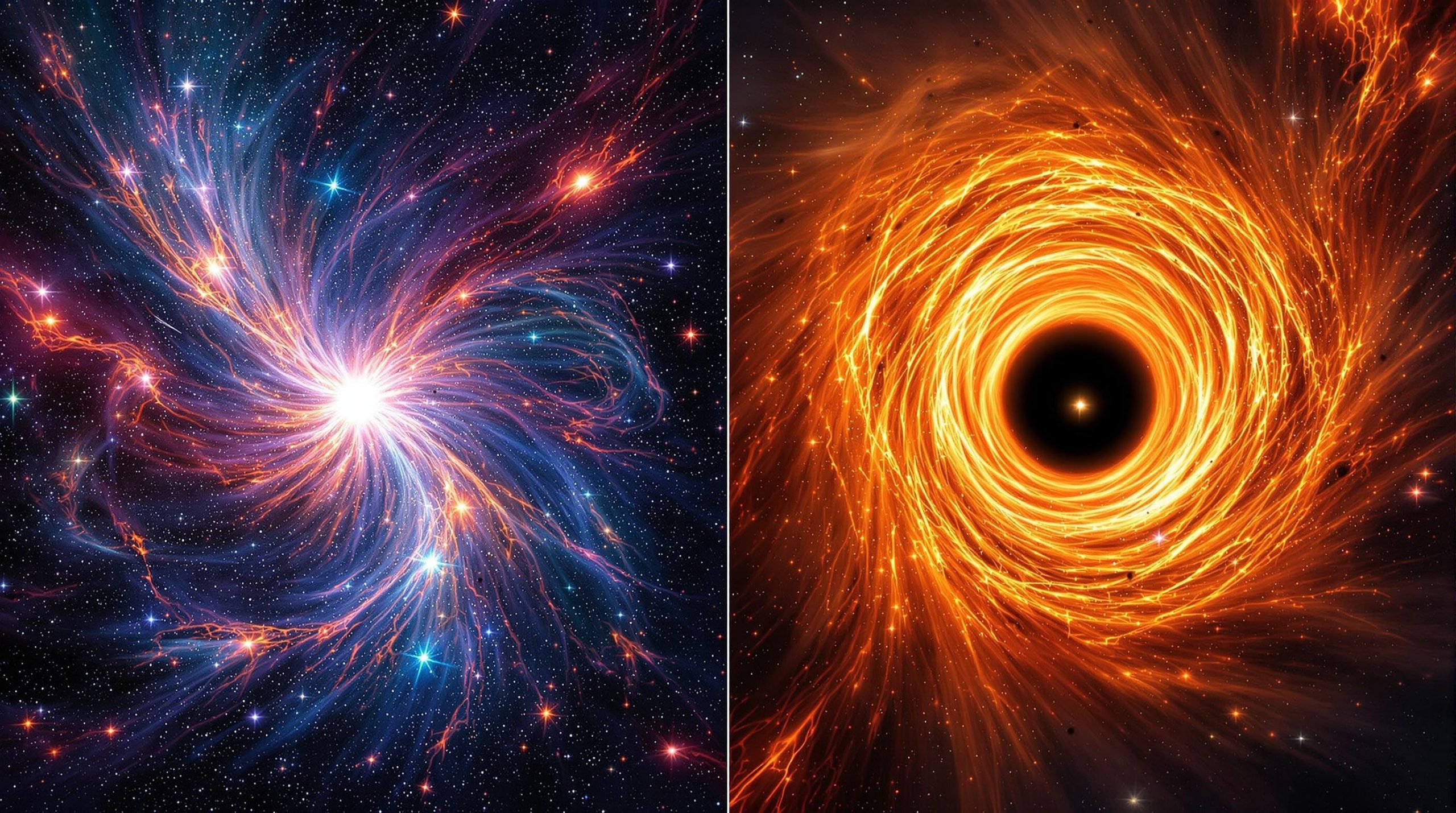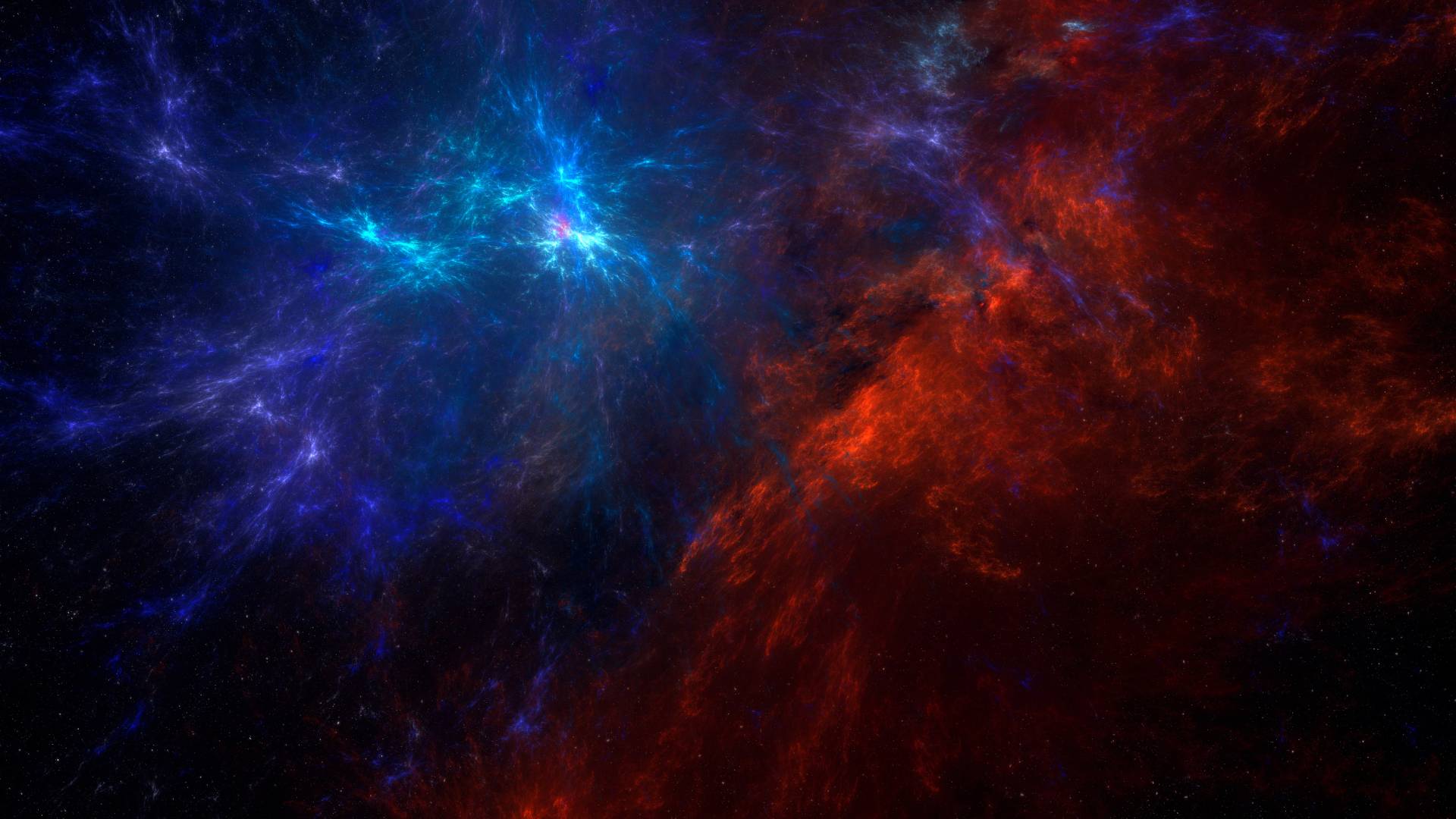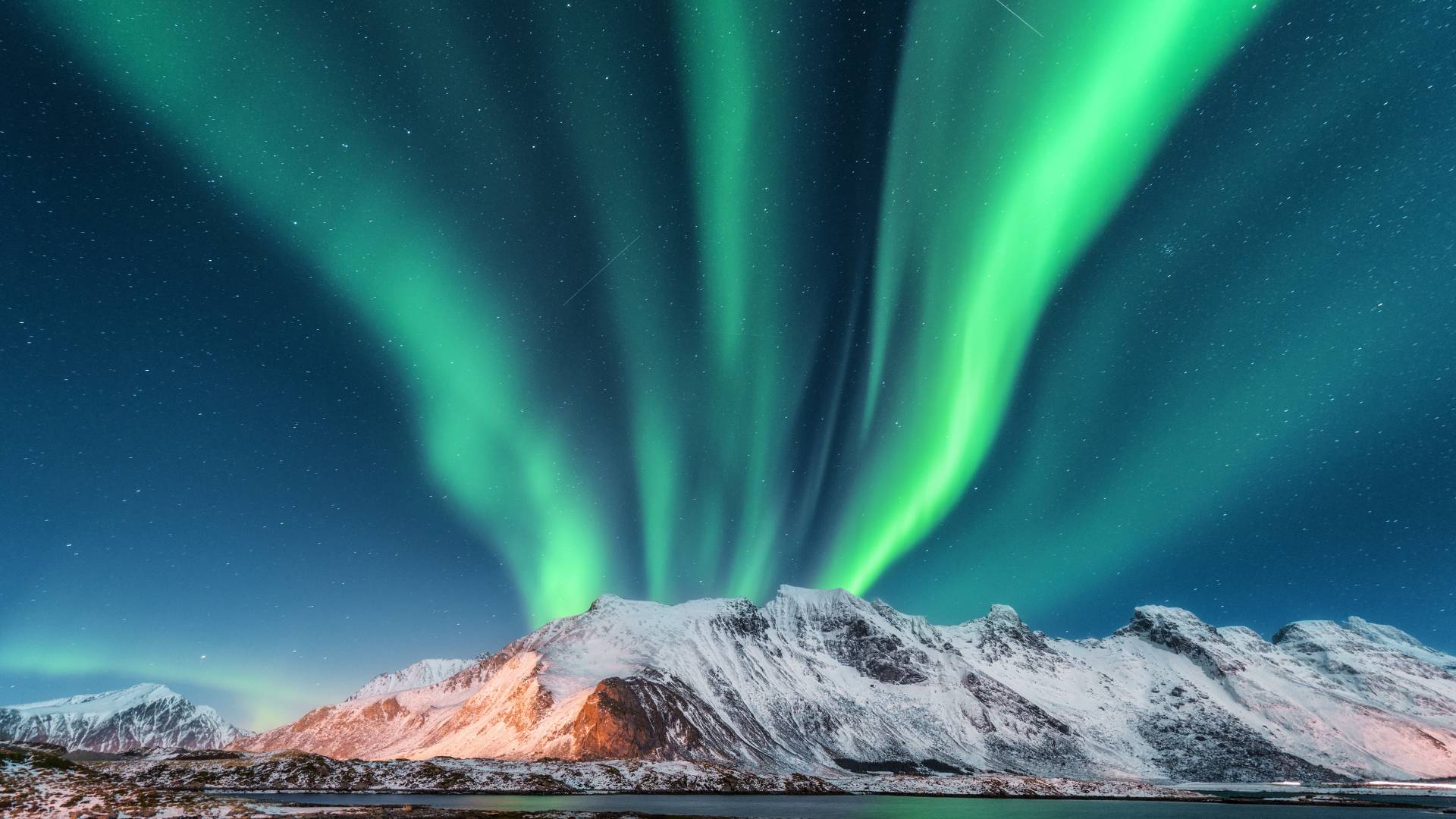The universe is full of extreme cosmic events, but few are as violent and awe-inspiring as Supernova vs Hypernova . These stellar explosions release more energy in seconds than our Sun will emit in its entire lifetime! But what exactly is the difference between a supernova and a hypernova, and which one is more powerful?
In this article, we’ll break down how these explosions happen, their energy output, and their effects on the cosmos. stay with Spaceyv
Supernova vs Hypernova , which one stronger ?
1. What Is a Supernova?
A supernova is the explosive death of a massive star. This catastrophic event releases enormous amounts of energy, often outshining an entire galaxy for a short period.
Types of Supernovae
There are two main types of supernovae:
1️⃣ Type I Supernova (Triggered by a White Dwarf)
- Occurs in binary star systems where a white dwarf absorbs material from a companion star.
- When it reaches 1.4 times the mass of the Sun (Chandrasekhar Limit), it undergoes runaway nuclear fusion and explodes.
- No hydrogen is found in the explosion’s spectra.
2️⃣ Type II Supernova (Triggered by Core Collapse)
- Occurs in massive stars (at least 8 times the Sun’s mass) when they run out of nuclear fuel.
- The core collapses, triggering an explosion.
- Leaves behind a neutron star or black hole.
Energy Released in a Supernova
- A typical supernova releases about 10²⁸ megatons of TNT (as much energy as our Sun emits over 10 billion years).
- It can reach brightness levels of 10 billion Suns.
- The explosion enriches space with heavy elements like iron, gold, and uranium.
🔭 Example: SN 1054
- A supernova recorded in 1054 AD by Chinese and Arab astronomers.
- Its remnants formed the Crab Nebula, which we can still observe today.
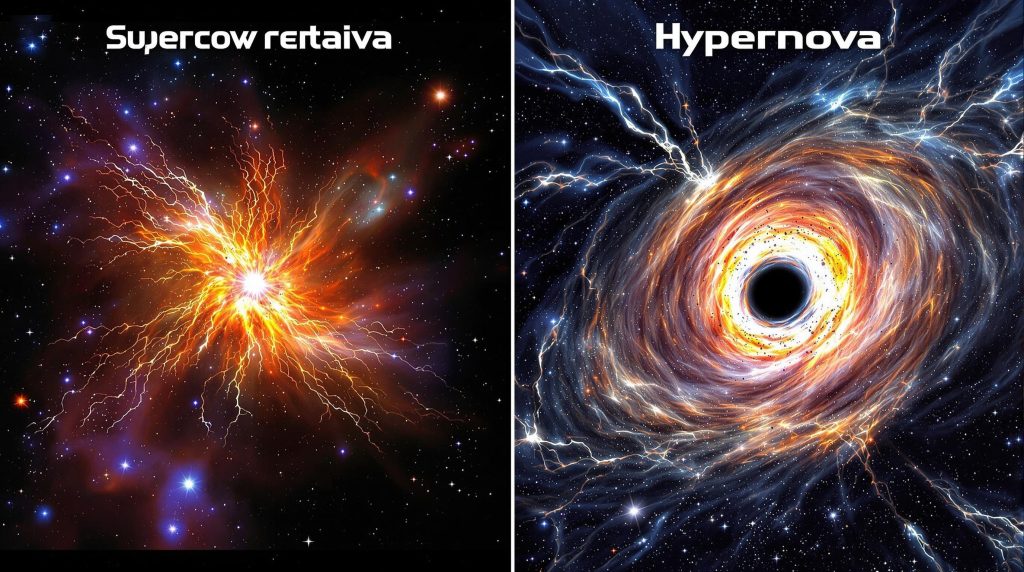
2. What Is a Hypernova?
A hypernova is a super-powerful supernova, usually 10 times more energetic than a regular supernova. It happens when an extremely massive star (30+ solar masses) collapses into a black hole instead of a neutron star.
How Does a Hypernova Happen?
- A massive star (30-100 times the Sun’s mass) reaches the end of its life.
- The core collapses into a black hole, triggering a gamma-ray burst (GRB).
- The explosion releases more energy than a standard supernova, creating ultra-bright light and high-energy jets.
Energy Released in a Hypernova
- A hypernova can release up to 100 times more energy than a typical supernova.
- Can generate Gamma-Ray Bursts (GRBs)—the brightest events in the universe.
- The explosion can completely disrupt the star, leaving little to no remnant.
🔭 Example: SN 1998bw
- One of the first confirmed hypernovae, linked to a long-duration gamma-ray burst (GRB 980425).
3. Supernova vs Hypernova: Key Differences
| Feature | Supernova | Hypernova |
|---|---|---|
| Trigger | Core collapse of a star (~8-30 solar masses) or white dwarf explosion | Core collapse of a supermassive star (30+ solar masses) |
| End Result | Forms a neutron star or black hole | Forms a black hole with possible gamma-ray bursts |
| Energy Released | 10²⁸ megatons of TNT | 100 times more powerful than a supernova |
| Brightness | Can outshine a galaxy for weeks | Much brighter, visible across billions of light-years |
| Aftermath | Creates a supernova remnant (e.g., nebula) | Can completely destroy the star |
| Example | SN 1054 (Crab Nebula), SN 1987A | SN 1998bw, GRB 980425 |
4. Which One Is More Powerful?
✅ A hypernova is much more powerful than a supernova.
- Hypernovae release 10 to 100 times more energy than a typical supernova.
- They produce gamma-ray bursts, which can travel across the universe.
- They are much rarer than supernovae, occurring only in the most massive stars.
If Earth were close to a hypernova event, the resulting radiation could strip away our atmosphere, potentially causing mass extinctions. Fortunately, no hypernova-prone stars are close enough to threaten us.
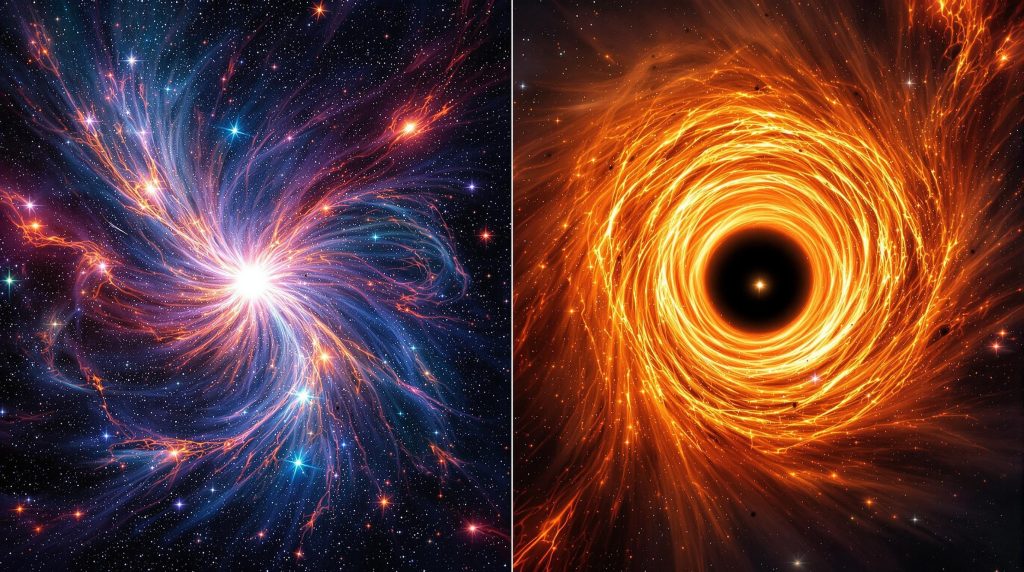
5. How Do These Explosions Affect the Universe?
Both supernovae and hypernovae play a key role in shaping the cosmos:
🌌 Element Creation
- Supernovae create heavy elements like iron, gold, and uranium, enriching the universe.
- Hypernovae produce even rarer elements.
🚀 Star Formation
- The explosion’s shockwaves trigger the birth of new stars in nearby gas clouds.
🕳 Black Hole Formation
- A hypernova often leads to black hole formation.
🌍 Potential Threat to Earth
- A nearby hypernova or gamma-ray burst could damage Earth’s atmosphere, exposing us to deadly cosmic radiation.
6. Can We Observe These Explosions?
Yes! Astronomers detect supernovae and hypernovae using:
🔭 Telescopes (Hubble, James Webb, etc.) – To see light from distant explosions.
📡 Gamma-ray telescopes (Swift, Fermi) – To detect gamma-ray bursts from hypernovae.
🛰 Supernova remnants (like the Crab Nebula) – To study past explosions.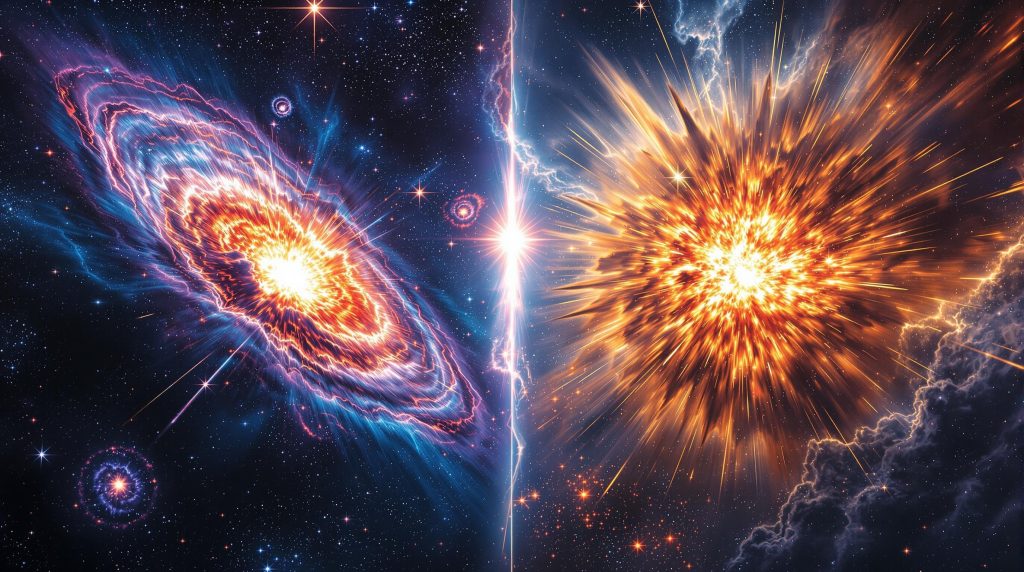
7. Conclusion: The Power of Cosmic Explosions
Both supernovae and hypernovae are among the most powerful events in the universe. However, hypernovae are significantly more energetic and rare than regular supernovae.
Final Takeaways
✅ Supernovae are common and create neutron stars or black holes.
✅ Hypernovae are much rarer and often produce gamma-ray bursts.
✅ Hypernovae are up to 100 times more powerful than supernovae.
✅ These explosions shape the universe by creating elements, triggering star formation, and forming black holes.
Even though these cosmic blasts happen millions of light-years away, they continue to influence the very fabric of the universe—including the elements that make up our own planet and bodies.
8. References
NASA – Supernova Facts & Discoveries
https://www.nasa.gov/supernova
NASA’s database on supernova discoveries and research.
European Space Agency (ESA) – Gamma-Ray Bursts & Hypernovae
https://www.esa.int/gamma-ray-bursts
ESA’s research on hypernovae and gamma-ray bursts.
Harvard-Smithsonian Center for Astrophysics – Hypernovae Studies
https://www.cfa.harvard.edu/hypernova
Latest research on hypernovae and their impact on space.
🚀 Want to learn more? Let me know your thoughts or questions about supernovae and hypernovae! 🌠

